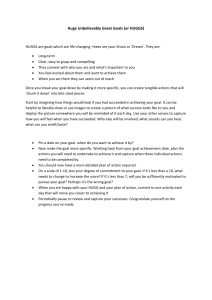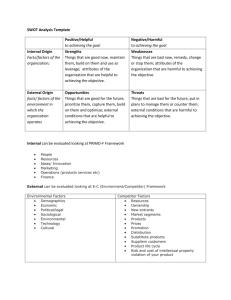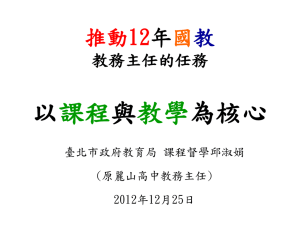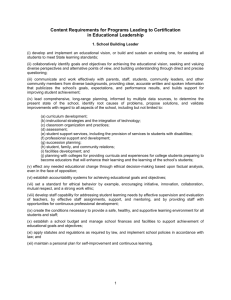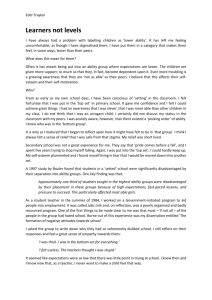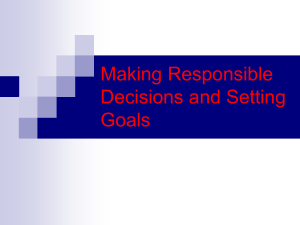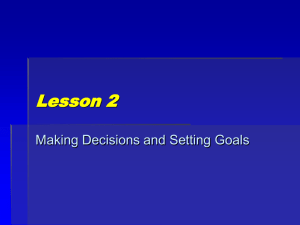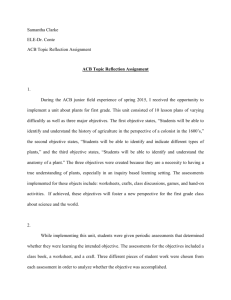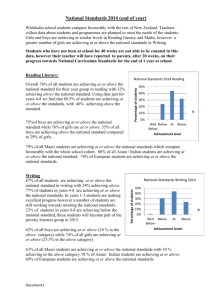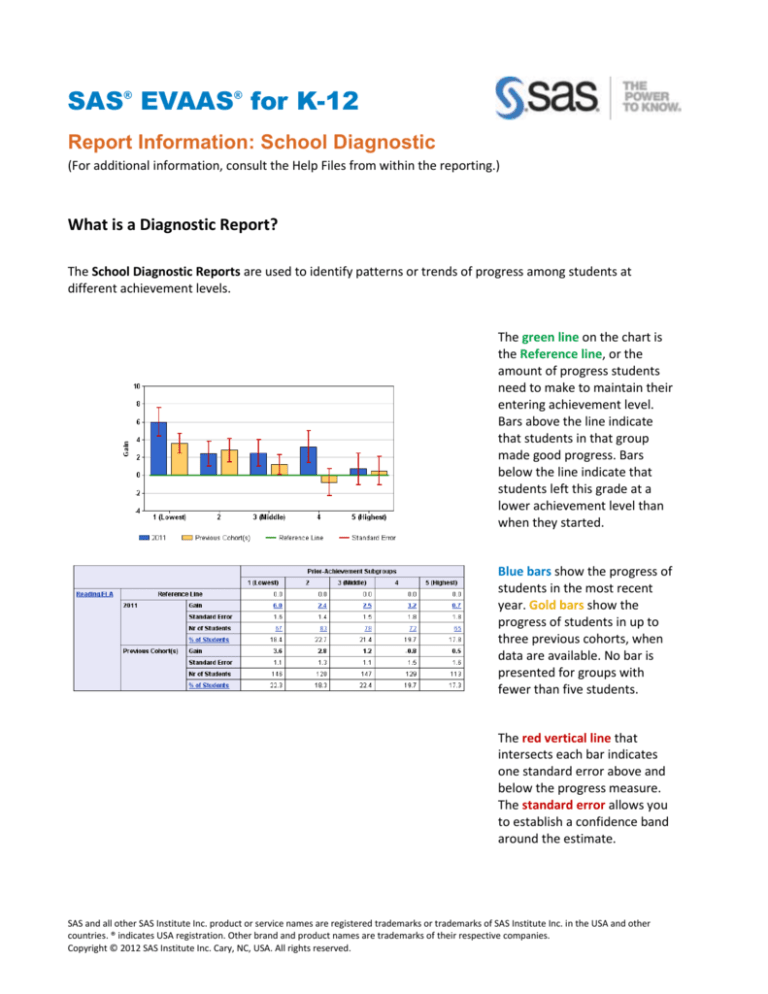
SAS® EVAAS® for K-12
Report Information: School Diagnostic
(For additional information, consult the Help Files from within the reporting.)
What is a Diagnostic Report?
The School Diagnostic Reports are used to identify patterns or trends of progress among students at
different achievement levels.
The green line on the chart is
the Reference line, or the
amount of progress students
need to make to maintain their
entering achievement level.
Bars above the line indicate
that students in that group
made good progress. Bars
below the line indicate that
students left this grade at a
lower achievement level than
when they started.
Blue bars show the progress of
students in the most recent
year. Gold bars show the
progress of students in up to
three previous cohorts, when
data are available. No bar is
presented for groups with
fewer than five students.
The red vertical line that
intersects each bar indicates
one standard error above and
below the progress measure.
The standard error allows you
to establish a confidence band
around the estimate.
SAS and all other SAS Institute Inc. product or service names are registered trademarks or trademarks of SAS Institute Inc. in the USA and other
countries. ® indicates USA registration. Other brand and product names are trademarks of their respective companies.
Copyright © 2012 SAS Institute Inc. Cary, NC, USA. All rights reserved.
Common Diagnostic Patterns
Reflect on the following examples of student progress patterns, relative to your own teaching strategies and
practices. If your strategy is for “all students to make excellent progress every year,” you will want to strive
for a pattern like the one below:
Example 1: Desirable Pattern
Notice in this example that all students are making
excellent progress, all groups are above the green
line on the School Diagnostic Report, and the
students who are at risk for not being proficient in
the current grade have progress that is
accelerated.
Example 2: Shed Pattern
In this example, the lowest achieving students are
making sufficient progress.
Students at an average achievement level are
making expected progress.
However, the highest achieving students appear to
be losing ground. Teachers and administrators will
want to find ways to create more progress
opportunities for high achieving students.
Example 3: Reverse Shed Pattern
In this example, high achieving students are
making excellent progress.
Students who are average in achievement also are
making sufficient progress.
In contrast, the lowest achieving students are not
making as much progress as they should. A
pattern like this one will widen the achievement
gap. Teachers and administrators should consider
how to help lower achieving students gain more
ground.
Example 4: Tent Pattern
In this example, the students in the middle of the
achievement distribution are making sufficient
progress, but both lower achieving and higher
achieving students are falling behind their peers.
In this case, teachers and administrators will want
to consider both how to support low-achieving
students and how to challenge high-achieving
students.
Example 5: V Pattern
In this example, the opposite of the Tent Pattern,
only the lowest and the highest achieving students
are making good progress. Students in between
have not had enough opportunities for academic
growth.
Example 5: Opportunity Gap Pattern
In this example, the students in every achievement
group are making sufficient progress in the most
recent year, except for the second group.
Teachers and administrators will want to consider
how to adjust the classroom instruction to meet
these students’ needs. In addition, what
approaches that are successful with the lowest
achieving students could be expanded to include
students in the second achievement group?

